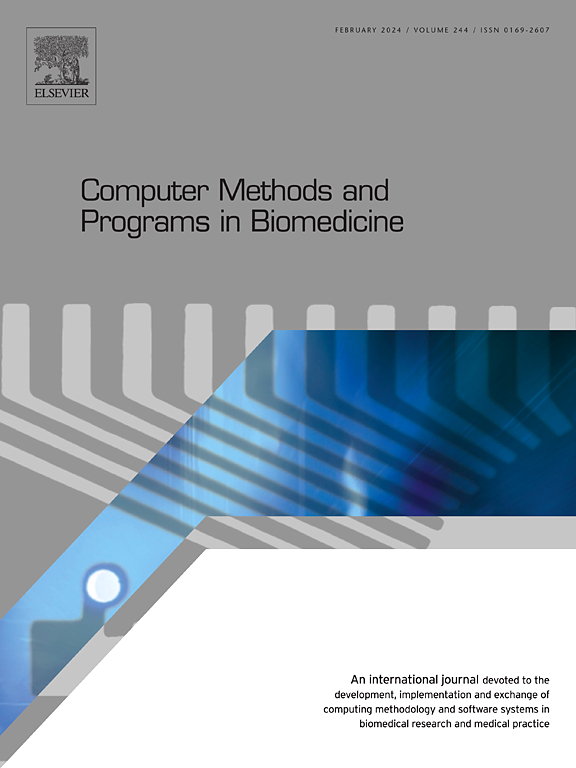Elevating performance and interpretability of in silico classifiers for drug proarrhythmia risk evaluations using multi-biomarker approach with ranking algorithm
IF 4.9
2区 医学
Q1 COMPUTER SCIENCE, INTERDISCIPLINARY APPLICATIONS
引用次数: 0
Abstract
Background and objective
Using electrophysiological simulations and machine learning to predict drug proarrhythmia risk has gained popularity due to its effectiveness. The leading in silico drug assessment system mainly uses a single biomarker (qNet) to predict proarrhythmia risk, offering good performance and straightforward interpretation. Other advanced classifiers incorporating additional physiological biomarkers provide better predictive capabilities but are less intuitive. Thus, a method that accommodates multiple biomarkers while maintaining interpretability is needed.
Methods
We enhance the current best ordinal logistic regression (OLR) model by adding more physiological biomarkers to overcome its limitations. We also introduce a general torsade metric score (TMS) for multi-biomarker approaches to facilitate easier interpretation. Additionally, a novel ranking algorithm based on a simple multi-criteria decision analysis method is employed to evaluate various classifiers against standard proarrhythmia risk criteria efficiently.
Results
Our proposed method demonstrates that using multiple well-known biomarkers yields better performance than using qNet alone. Some accepted multi-biomarker OLR models do not incorporate qNet yet outperform those that do. Moreover, some ill-performing biomarkers when utilized individually can show improved performance in combination with other biomarkers.
Conclusion
The proposed approach offers an effective way of utilizing multiple biomarkers, including well-known ones, providing practical alternatives for proarrhythmia risk assessment. The interpretability of the accepted models is straightforward, thanks to the TMS thresholds for multi-biomarker OLR models that allow direct evaluation of the classification prediction of individual drugs.
求助全文
约1分钟内获得全文
求助全文
来源期刊

Computer methods and programs in biomedicine
工程技术-工程:生物医学
CiteScore
12.30
自引率
6.60%
发文量
601
审稿时长
135 days
期刊介绍:
To encourage the development of formal computing methods, and their application in biomedical research and medical practice, by illustration of fundamental principles in biomedical informatics research; to stimulate basic research into application software design; to report the state of research of biomedical information processing projects; to report new computer methodologies applied in biomedical areas; the eventual distribution of demonstrable software to avoid duplication of effort; to provide a forum for discussion and improvement of existing software; to optimize contact between national organizations and regional user groups by promoting an international exchange of information on formal methods, standards and software in biomedicine.
Computer Methods and Programs in Biomedicine covers computing methodology and software systems derived from computing science for implementation in all aspects of biomedical research and medical practice. It is designed to serve: biochemists; biologists; geneticists; immunologists; neuroscientists; pharmacologists; toxicologists; clinicians; epidemiologists; psychiatrists; psychologists; cardiologists; chemists; (radio)physicists; computer scientists; programmers and systems analysts; biomedical, clinical, electrical and other engineers; teachers of medical informatics and users of educational software.
 求助内容:
求助内容: 应助结果提醒方式:
应助结果提醒方式:


